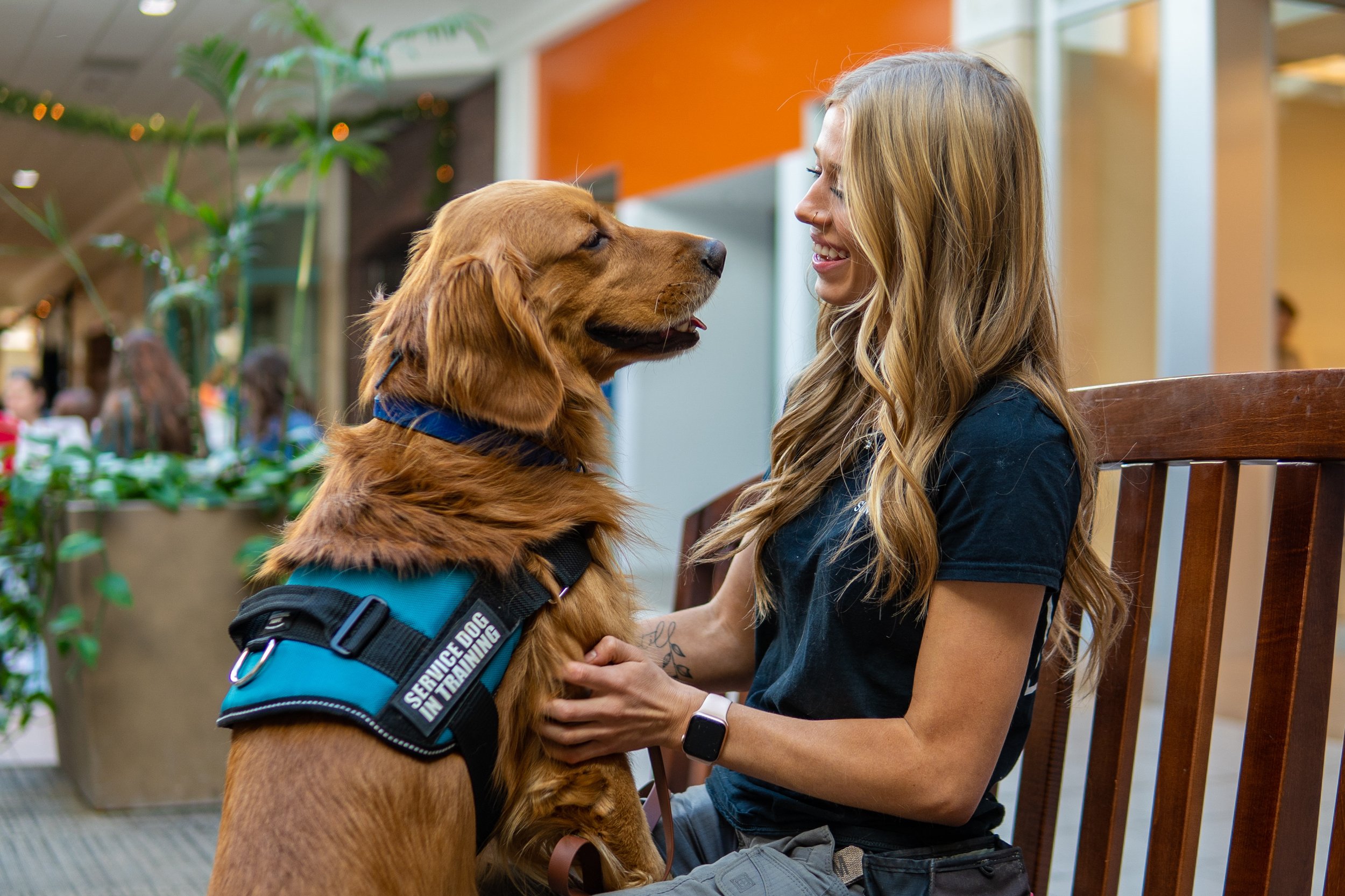Vital Pet Training Tips for Raising a Well-Behaved Buddy
Crucial strategies such as very early socialization, the establishment of consistent commands, and the implementation of favorable support can substantially influence a dog's behavior and overall personality. Comprehending canine behavior is crucial for customizing training techniques that resonate with specific canines.
Recognizing Dog Behavior
:strip_icc()/young-woman-training-her-dog-686725227-588bab6d5f9b5874ee8bcef5.jpg)
In addition, socializing plays an essential function in forming a canine's behavior. Exposure to various environments, individuals, and other animals aids pets establish self-confidence and minimizes the probability of fear-based responses. Early socialization is specifically crucial, as experiences during the critical development duration dramatically affect a pet's lasting actions.
Additionally, understanding the concepts of discovering theory-- such as favorable support, unfavorable reinforcement, and penalty-- can improve training performance. Pet dogs are much more likely to repeat habits that generate positive end results. Consequently, employing regular, reward-based training methods promotes a trusting connection between the dog and its instructor.

Standard Commands to Educate
Showing fundamental commands is a vital foundation for reliable pet training and communication. Dog Training For Dogs. These commands not only aid develop a clear line of communication in between you and your pet dog, but they also advertise security and etiquette in numerous circumstances
Start with fundamental commands such as "Sit," "Keep," "Come," "Down," and "Heel." Each command offers a certain function; for instance, "Sit" can help relax a fired up pet dog, while "Come" is important for guaranteeing your dog go back to you when called.
When presenting a new command, make use of a clear and constant tone. Constantly match the verbal command with a hand signal to enhance understanding. Method in a quiet atmosphere before slowly presenting distractions. Progressively increase the duration and distance as your pet comes to be much more proficient.
Uniformity is key; method regulates day-to-day to enhance learning, and make sure all household participants make use of the same commands to avoid confusion. Bear in mind that persistence is essential throughout this procedure, as different pets may learn at different paces. Establishing these basic commands promotes a harmonious connection and sets the stage for more sophisticated training in the future.
Positive Reinforcement Methods
Positive reinforcement techniques are highly effective methods for encouraging desired habits in canines. This training technique includes fulfilling your dog for exhibiting behaviors you wish to reinforce, thereby enhancing the possibility of those habits being duplicated. Benefits can take various forms, including deals with, appreciation, or play, and must be tailored to what use this link motivates your dog most.
Timing is crucial in positive support. Benefits ought to be given instantly after the desired actions strikes produce a clear association. For instance, if you desire your pet dog to rest on command, reward them as quickly as they rest, guaranteeing they understand what action is being enhanced.
Consistency is an additional essential element. Dog Training For Dogs. Use the same commands and benefits each time to avoid complication. Slowly, you can eliminate treats for even more periodic benefits, such as verbal appreciation, to preserve the behavior without depending on consistent exterior reinforcement
Additionally, it is very important to continue to be individual and avoid punishment, as adverse reinforcement can bring about be afraid and stress and anxiety, ultimately preventing training initiatives. By executing positive reinforcement strategies, you will certainly foster a trusting Continued connection with your canine, resulting in a well-behaved companion.
Socializing and Communication
Socialization and interaction are basic elements of a dog's advancement that enhance positive reinforcement strategies. Very early exposure to varied atmospheres, people, and various other animals is critical for promoting a well-adjusted animal. This procedure assists pet dogs establish confidence and versatility, minimizing the possibility of behavior problems such as worry or aggressiveness.
Begin socialization during the vital developmental window, generally in between 3 and fourteen weeks of age. Introduce your young puppy to different stimuli, consisting of various sounds, views, and appearances. Enroll in pup courses or arrange supervised playdates with various other canines to motivate positive communications.
As canines grow, proceed to reveal them to varied experiences. Tasks such as visits to parks, pet-friendly shops, or area occasions can boost their social abilities and comfort levels in unknown settings.
Always monitor interactions to ensure they are favorable and worry-free. If your pet dog displays indications of anxiousness or hostility, comfortably redirect them and permit gradual direct exposure at a comfy speed. Through consistent socializing and communication, you lay the foundation for a well balanced, mannerly buddy capable of thriving in varied additional reading social scenarios.
Uniformity in Training
Developing uniformity in training is crucial for effective interaction in between a pet dog and its owner. Canines grow on regular and clear assumptions, which assists them understand what actions is wanted.
Consistency likewise expands beyond commands; it incorporates the policies established within the house. For instance, if a dog is not permitted on the furniture, this regulation has to be imposed at all times. Combined signals can result in behavior issues, as the canine might end up being uncertain regarding what serves.
Moreover, all member of the family should get on the same web page regarding training strategies and commands. The pet dog might become distressed and disoriented. if one person awards an actions while another scoldings it.
Final Thought
In conclusion, applying crucial pet training ideas promotes a well-behaved companion. Inevitably, these methods cultivate a trusting partnership in between the canine and its family, advertising a harmonious living environment and a well-adjusted canine buddy.
Vital techniques such as very early socialization, the facility of regular commands, and the application of favorable reinforcement can significantly affect a canine's behavior and general disposition. Understanding canine habits is important for tailoring training strategies that resonate with private dogs.Recognizing canine behavior is crucial for efficient dog training. Pet dogs are more likely to duplicate behaviors that produce favorable results.Favorable reinforcement methods are very effective techniques for motivating wanted behaviors in pet dogs.